Everything you need to know about white action
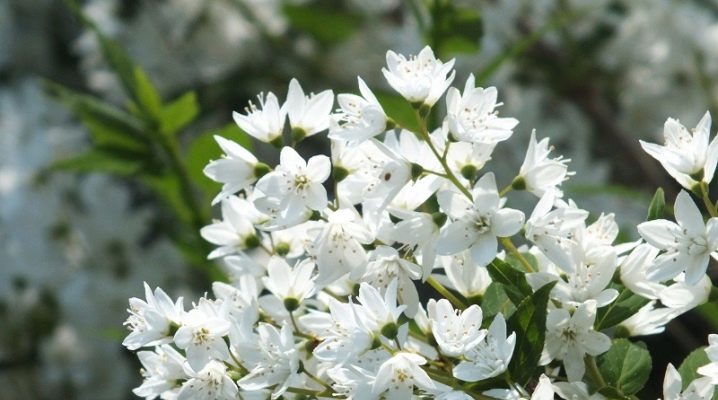
Exotic shrub with delicate flowers - deytion - appeared in our gardens not so long ago. The plant was brought to Europe only in the 19th century. In the wild, it is found in East Asia, Mexico and the Himalayas. Action looks good as a single planting, hedge or recreation area design.
Description
A deciduous shrub of the hydrangea family, similar in appearance to lilacs, hydrangeas and honeysuckle. There are over 50 different species of this plant. The most common among them: deytion white, terry, dwarf.
- Deytion white - a bush reaching a height of 200 cm. It has a spreading crown that keeps its shape well. Snow-white bell-shaped flowers are collected in a brush. It blooms from 3 years of age, and flowering continues from June to July. Leaves are oval, up to 10 cm. Often used as a hedge.
- Terry action - upright plant up to 300 cm high, with a dense crown. It is covered with leaves up to 8 cm in size, oval and pointed, with a rough surface. Flowers are white on the inside and with a pink tint on the outside, double, collected in a brush. Blooms from May to June.
- Dwarf action is a low (30 cm in height) spreading shrub. She has lanceolate leaves, which turn red in autumn. Early flowers, white.
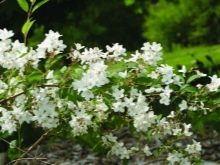

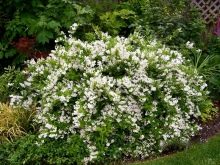
Landing
The shrub has little requirements for soil and location. It is necessary to plant the plant in March-April or from August to November. The transplant is carried out only in the spring. The soil for action must have the following qualities:
- moderate humidity;
- looseness;
- be humus;
- have a neutral, slightly acidic or slightly alkaline pH.
Sunny areas or partial shade are good for landing. The distance between the action and any other objects should be about 250 cm, since the bush grows quite widely. Weeds at the planting site are removed. Then a hole is dug up to a depth of about 30-40 cm, and its bottom is loosened. The root system of action is completely covered with earth. The area of the plant between the trunk and the roots should be at the level of the edge of the soil. After planting, you can make a trench around the bush or mulch. These procedures will reduce the need for weeding and make watering easier.
After planting, to increase the splendor of the shrub, the branches are pruned to 3-5 buds.
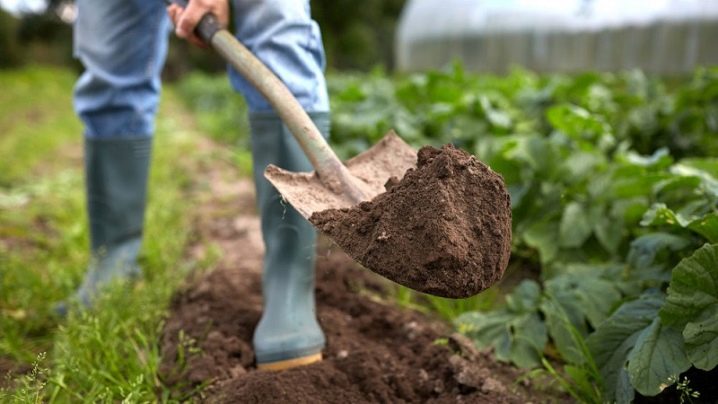
Care
Growing action and caring for it does not require too much effort, but it is necessary to take into account some features of the plant. The culture has a small root system, so it does not tolerate drought and excessive watering. Buckets of water once a week at medium temperatures, and two buckets during dry season will suffice. With a large amount of rainfall, the bush is not watered at all.
Top dressing is applied during the period when the plant is blooming. It can be manure or complex mineral fertilizers. The shrub is not completely frost-resistant, especially some of its varieties. At very low temperatures in the open field, it can even freeze to the border of the ground or snow, while flowers appear only on last year's branches. Therefore, it is recommended to place the action in a place protected from the wind, and during wintering, cover the shrub with spruce branches or more serious shelters. In warm regions, it is enough to bend it to the ground. New branches grow from undamaged shoots and quickly restore crown volume.
Frozen stems are shortened to a healthy area. If only the root system is preserved, the action is cut to hemp. Thus, the rejuvenation of the plant is also produced. In addition, in the spring, after planting, the branches are shortened by 1/3 to form a lush compact bush shape. In the fall, pruning is carried out to the first good bud of shoots that have bloomed in the current year. Old and damaged branches are removed completely.
The plant is resistant to many pests and diseases. Sometimes the action is affected by aphids, bumblebee proboscis or leafworm. Powdery mildew or rust may appear at elevated temperatures and humidity. Removing damaged leaves and treating with a universal insecticide or fungicide will solve the problem.
Thinning pruning and removing weeds around the bush will reduce the risk of disease.
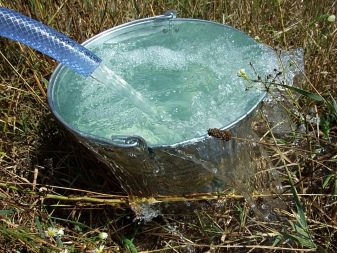
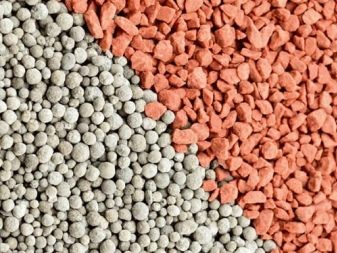
Reproduction
The action is propagated by cuttings, dividing the bush, seeds and using cuttings. Green cuttings are carried out in June. Large mature shoots are used. They are planted at an angle and deepen into the soil by about 0.5 cm. Germinate in a greenhouse. Lignified cuttings are prepared in late autumn. They must be at least 10 cm and are collected in bundles of 10-15 in each. They are planted deep in the sand, almost completely covered. The cuttings are kept in this state in a cool place until spring. Then they are planted in the ground as green.
When dividing the mother bush, it is divided into 2-3 parts along with the roots. After that, the delenki are immediately planted in open ground. When the root growth is retracted, it is dug up and transferred to a new place in the spring. The seeds of the action ripen at the end of September. Sowing is carried out in the spring using heated greenhouses. The soil should be composed of humus, peat and sand. Seeds germinate in 1.5 months. Seedlings are planted in open ground.
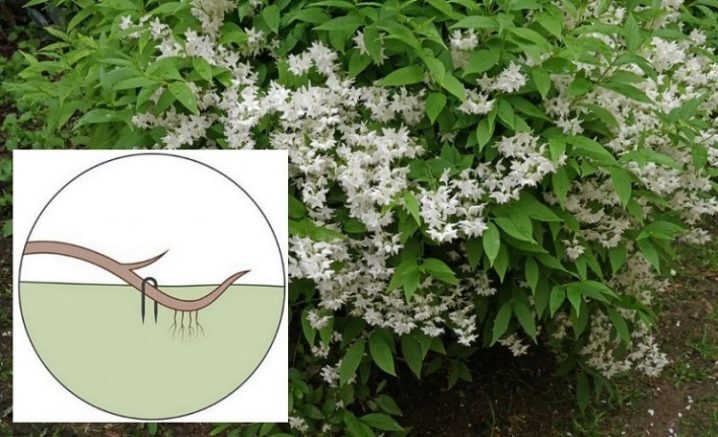

































































The comment was sent successfully.